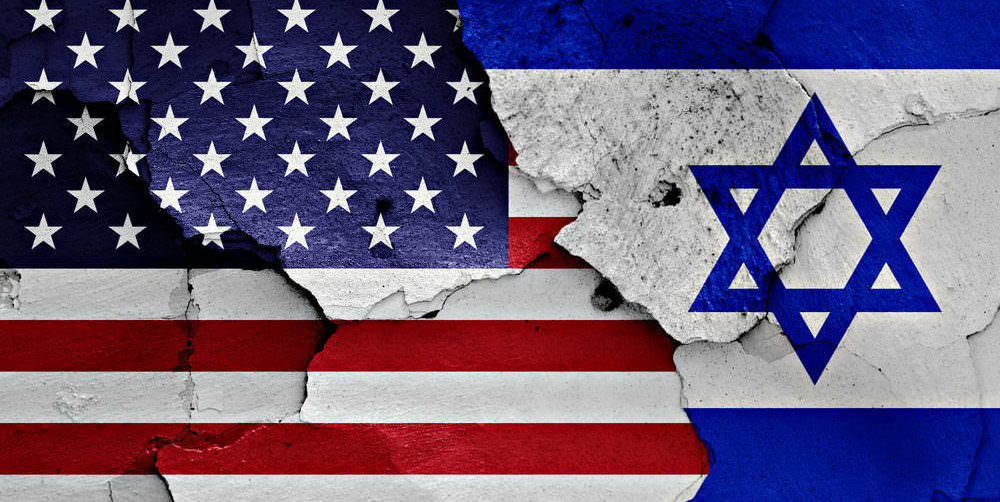One of the reasons the EU, Jordan, and other anti-Israel countries believe Israel. Has to return to the pre-1967 borders is the Resolution based on a General Assembly, The UN General Assembly. Firstly, unlike the Security Council, decisions taken by the General Assembly are not binding. More importantly, 242 doesn’t say what the anti-Israel countries think it states. Those people claim that the wording of 242 calls for Israel to withdraw from “the” territories (the =all) taken during the Six-Day War. The Resolution actually says that ‘Israel should withdraw from territories’ taken during the war (no “the” =some).
It was no accident that “the” was left out. Diplomats are very exact in their language. During the negotiations to create Resolution 242, Arab governments tried three times to have “the” inserted into the Resolution, and their request was rejected by the rest of the assembly. But, by repeating what they wanted the Resolution to say after 242 had passed years, the haters succeeded in convincing many people to accept their distorted interpretation.
However, if you read the statements of the drafters of the Resolution, there is no ambiguity about what they meant. Below are those statements by country and participant:
United Kingdom
Lord Caradon, the sponsor of the draft that was about to be adopted, stated, before the vote in the Security Council on Resolution 242:
“… the draft Resolution is a balanced whole. To add to it or to detract from it would destroy the balance and also destroy the wide measure of agreement we have achieved together. It must be considered as a whole as it stands. I suggest that we have reached the stage when most, if not all, of us, want the draft Resolution, the whole draft Resolution, and nothing but the draft Resolution.” (S/PV 1382, p. 31, of 22.11.67)
Interviewed on Kol Israel in February 1973, Lord Caradon was specific:
Question: “This matter of the (definite) article which is there in French and is missing in English, is that really significant?”
Answer: “The purposes are perfectly clear; the principle is stated in the preamble, the necessity for withdrawal is stated in the operative section. And then the essential phrase which is not sufficiently recognized is that withdrawal should take place to secure and recognized boundaries, and these words were very carefully chosen: they have to be secure and they have to be recognized. They will not be secure unless they are recognized. And that is why one has to work for agreement. This is essential. I would defend absolutely what we did. It was not for us to lay down exactly where the border should be. I know the 1967 border very well. It is not a satisfactory border, it is where troops had to stop in 1947, just where they happened to be that night, that is not a permanent boundary… “
Mr. Michael Stewart, Secretary of State for Foreign and Commonwealth Affairs, in reply to a question in Parliament, November 17th, 1969:
Question: “What is the British interpretation of the wording of the 1967 Resolution? Does the Right Honourable Gentleman understand it to mean that the Israelis should withdraw from all territories taken in the late war?”
Mr. Stewart: “No, Sir. That is not the phrase used in the Resolution. The Resolution speaks of secure and recognized boundaries. These words must be read concurrently with the statement on withdrawal.”
Mr. Michael Stewart, Secretary of State for Foreign and Commonwealth Affairs, in reply to a question in Parliament, December 9th, 1969:
“As I have explained before, there is a reference, in the vital United Nations Security Council Resolution, both to withdrawal from territories and to secure and recognized boundaries. As I have told the House previously, we believe that these two things should be read concurrently and that the omission of the word ‘all’ before the word ‘territories’ is deliberate.“
Mr. George Brown, British Foreign Secretary in 1967, on January 19th, 1970:
“I have been asked over and over again to clarify, modify, or improve the wording, but I do not intend to do that. The phrasing of the Resolution was very carefully worked out, and it was a difficult and complicated exercise to get it accepted by the UN Security Council. “I formulated the Security Council Resolution. Before we submitted it to the Council, we showed it to Arab leaders. The proposal said ‘Israel will withdraw from territories that were occupied’, and not from ‘the’ territories, which means that Israel will not withdraw from all the territories.” (The Jerusalem Post, 23.1.70)
United States of America
Mr. Arthur Goldberg, US representative, in the Security Council in the course of the discussions that preceded the adoption of Resolution 242:
“To seek withdrawal without secure and recognized boundaries … would be just as fruitless as to seek secure and recognized boundaries without withdrawal. Historically, there have never been secure or recognized boundaries in the area. Neither the armistice lines of 1949 nor the cease-fire lines of 1967 have answered that description… such boundaries have yet to be agreed upon. An agreement on that point is an absolute essential to a just and lasting peace just as withdrawal is… ” (S/PV. 1377, p. 37, of 15. 11.67)
Mr. Joseph Sisco, Assistant Secretary of State, July 12th, 1970 (NBC “Meet the Press” ):
“That Resolution did not say ‘withdrawal to the pre-June 5 lines’. The Resolution said that the parties must negotiate to achieve agreement on the so-called final secure and recognized borders. In other words, the question of the final borders is a matter of negotiations between the parties.”
Eugene V. Rostow, Professor of Law and Public Affairs, Yale University, who, in 1967, was US Under-Secretary of State for Political Affairs:



